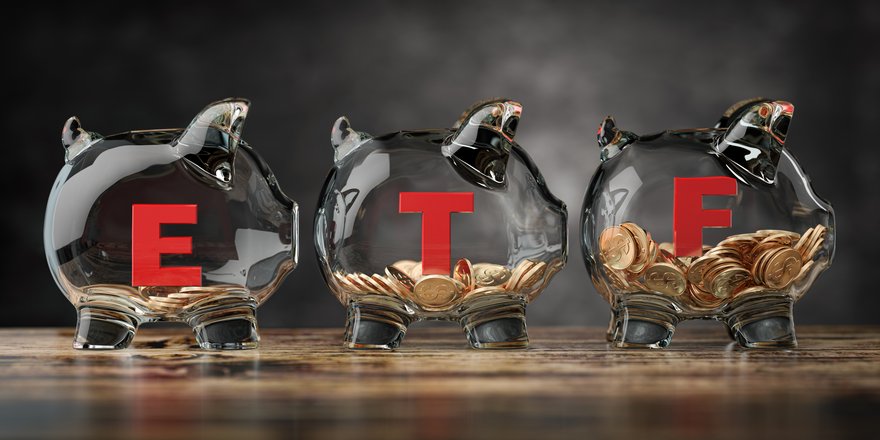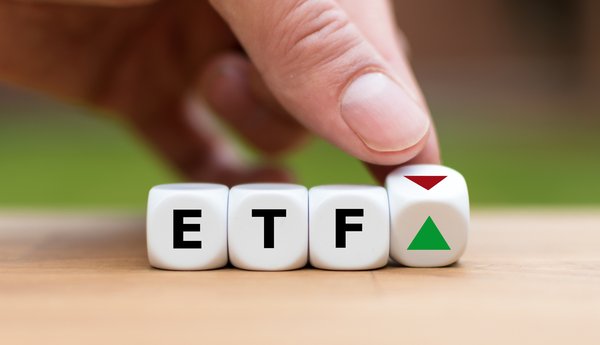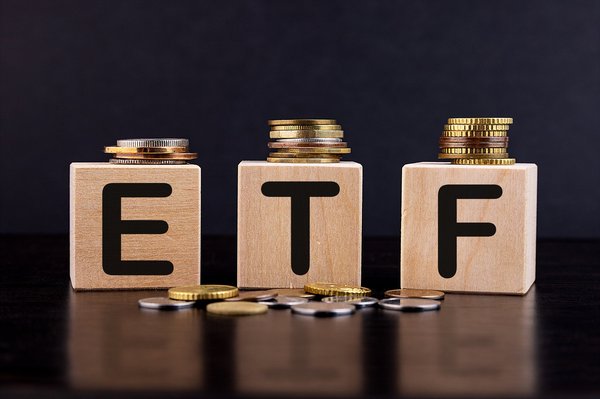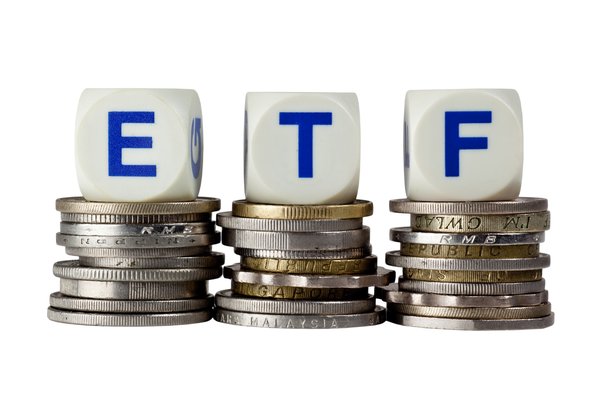The SPDR S&P 500 ETF Trust (SPY 0.07%) is the largest exchange-traded fund (ETF) in existence, with about $500 billion in assets under management as of May 2024. Launched by State Street Global Advisors (STT -1.96%) in 1993, it's also the first U.S.-listed ETF and the most-traded ETF in the world.
If you're wondering how to invest in the SPDR S&P 500 ETF Trust, you're in the right place. We'll cover how the SPDR S&P 500 ETF Trust works, how to buy shares, how it's performed historically, and how to decide whether it's the right investment for you.
Exchange-Traded Fund (ETF)
What is it?
What is the SPDR S&P 500 ETF?
The SPDR S&P 500 ETF trust is an ETF that tracks the performance of the S&P 500 index. Essentially, when you buy shares of the fund, you're investing in the 500 companies represented in the S&P 500 index. Its companies represent about 80% of the value of the U.S. stock market.
Shares of the SPDR S&P 500 ETF (sometimes called the SPY ETF because SPY is its stock ticker) are priced to represent about 10% of the value of the S&P 500 index. In other words, if the S&P 500 index is at $5,000, one share of the fund would cost about $500.
The goal of the SPDR S&P 500 ETF is to replicate the performance of the S&P 500 index as closely as possible. For example, if the index rises 20% in a given year, you'd expect slightly less than 20% returns. (The returns are slightly lower because you have to account for the fund's minimal investment fees.)
How to buy
How to buy the SPY ETF
ETFs trade on stock exchanges just like regular stocks, which means you can buy shares of the SPDR S&P 500 ETF as long as you have a brokerage account. Follow these four steps to invest in any ETF.
1. Open a brokerage account
To invest money, you'll need a brokerage account. You can easily open one online as long as you're at least 18. You'll need to provide some identifying information, like your address, Social Security number, date of birth, and possibly your employer's name.
You'll also need to choose the type of account you want. You could open a taxable brokerage account if you're investing money you may need before you retire. But if you're investing for the long term, buying the SPDR S&P 500 ETF Trust in an individual retirement account (IRA) could be a smart move because you can lock in a tax break.
Budget
2. Figure out your budget
Next, you'll need to decide how much you can afford to invest. If you were buying individual securities, you wouldn't want to allocate more than 5% to 10% to any one stock because having a diversified portfolio is vital. But an investment like the SPDR S&P 500 ETF (or any ETF that tracks most of the U.S. stock market) is already well diversified. So, it's OK to put most of your investing budget into this ETF.
You may not want to put all the money you have into the ETF all at once, though. Many investors use a strategy called dollar-cost averaging, where they invest on a set schedule. Doing so helps you lock in some low prices because you'll automatically purchase some shares when the market is down.
3. Do your research
It's important to do your homework with any investment, and the SPDR S&P 500 ETF is no different. You should familiarize yourself with the investment prospectus and learn not only how the fund works but also the alternatives.
One good thing about investing in a top S&P 500 index fund is that you don't need to scrutinize balance sheets and other financial statements like you would if you were buying individual stocks. A company needs a history of profitability just to be included in the S&P 500 index. Plus, if some stocks perform poorly, you're somewhat insulated because you're investing across 500 different companies.
4. Place an order
Once you've followed the first three steps, it's time to place your order. To do so, enter the fund's ticker symbol, SPY, in this case.
Traditionally, you'd need to indicate the number of shares you want. But with many brokers allowing you to buy fractional shares of ETFs, you may be able to specify a dollar amount instead. For example, if the SPY ETF is priced at $500 but you only want to invest $100, you could invest $100 and receive one-fifth of a share.
You'll also need to decide whether to place a market order or a limit order. With a market order, you're telling your broker to execute the trade immediately, but with a limit order, you're instructing your broker to buy shares only for a specified price. (The Motley Fool recommends you use a market order since it locks in the current price.)
Fund holdings
Holdings of the SPDR S&P 500 ETF
Although it represents 500 companies, the S&P 500 index actually tracks the performance of 503 stocks. That's because a few companies, like Google parent Alphabet (GOOG 0.96%) (GOOGL 0.81%) and Warren Buffett's Berkshire Hathaway (BRK.A -1.12%)(BRK.B -0.86%), have multiple share classes, so they're included more than once in the SPDR S&P 500 ETF Trust and other S&P 500 index funds.
The S&P 500 index uses a float-adjusted market capitalization weighting, which means the weight of each stock is determined by the market capitalization of its market float, or shares available for public trading. Because it aims to track the performance of the benchmark index, the SPDR S&P 500 ETF Trust uses the same weighting methodology.
The following stocks are the top 10 holdings of the SPDR S&P 500 ETF Trust as of early May 2024, with their respective weightings:

Because they all track the same underlying index, you'll get the same holdings with almost identical weightings with any S&P 500 index fund.
Should I invest?
Should I invest in SPDR S&P 500 ETF Trust?
The SPY ETF is a solid choice for most investors, but consider your overall investment goals and what you already own in your portfolio to determine whether the fund is right for you.
Consider investing in the SPDR S&P 500 ETF Trust if:
- You're a new investor: The SPY ETF provides automatic diversification, so it's a good backbone for your investment portfolio. Once you're already investing across a large swath of the stock market, you can add individual stocks or sector ETFs to the mix.
- You're investing for retirement: An S&P 500 ETF like the SPDR S&P 500 ETF Trust makes a good backbone for your retirement funds because it consists of a diversified mix of companies with a track record of earning profits.
- You don't want to research individual stocks: If you don't want to spend the considerable time required to research and select individual stocks, the SPDR S&P 500 ETF Trust is a good way to start investing.
Think twice about investing in the SPDR S&P 500 ETF Trust if:
- You're investing money you may need in the next couple of years: It's generally best to avoid investing in stocks if you anticipate needing your money within a few years because the stock market can be volatile in the short term. Consider placing money you'll need within a couple of years into a high-yield savings account or certificate of deposit (CD). If you're retiring soon, the SPDR S&P 500 ETF can still be a good fit for your portfolio, but you generally want to allocate more money to low-risk investments like bonds and CDs to help you weather short-term volatility.
- You already own S&P 500 funds: You don't need to invest in the SPDR S&P 500 ETF Trust if you already own ETFs or mutual funds that track the S&P 500 since these funds all track the same underlying investments.
- You're seeking dividend income: The SPDR S&P 500 ETF Trust currently has a dividend yield just shy of 1.4%. However, if you're looking for investment income, consider investing your money in a dividend ETF to score a higher yield.
Dividends
Does SPDR S&P 500 ETF Trust pay a dividend?
Yes, the SPDR S&P 500 ETF Trust pays a dividend. The dividend is based on dividends paid by the underlying companies in the S&P 500. As of March 31, 2024, the ETF had an annual dividend yield of 1.39%.
Expense ratio
What is the SPDR S&P 500 ETF Trust's expense ratio?
An ETF expense ratio is the percentage of your investment that goes toward fees. The SPDR S&P 500 ETF Trust's expense ratio is 0.0945%. That means if you invested $10,000, you'd pay $9.45 in investment fees. Some of the best ETFs to invest in track the S&P 500 index and have expense ratios as low as 0.03%, which amounts to just $3 on a $10,000 investment.
ETF Expense Ratio
The difference may not sound significant, but keep in mind that fees can eat away at your returns over time. Consider what would happen if you started with a $10,000 investment and added $1,000 every year, earning a 10% annualized rate of return. After 30 years, paying an expense ratio of 0.03% instead of 0.0945% would translate to around $27,000 in additional returns.
Historical record
Historical performance of SPDR S&P 500 ETF Trust
The SPDR S&P 500 ETF trust and other S&P 500 ETFs have good track records of producing profits over time. Here's how the fund has performed over various holding periods as of March 31, 2024:
| Holding Period | Annualized Return |
|---|---|
| 1 year | 29.70% |
| 3 years | 11.36% |
| 5 years | 14.89% |
| 10 years | 12.82% |
Although the SPDR S&P 500 ETF has a good record of delivering profits over long holding periods, the stock market can be bumpy in the short term. In 2022, for example, the ETF and its underlying index dropped by almost 20%, though it subsequently recovered. Because of the potential for short-term volatility, it works best as an ETF for long-term investors.
Related investing topics
The bottom line on investing in SPDR S&P 500 ETF Trust
The SPDR S&P 500 ETF Trust is a solid pick for anyone seeking to lock in the historical growth of the U.S. stock market. Although similar ETFs with lower expense ratios are available, the fees are still relatively minimal. Overall, the SPDR S&P 500 ETF Trust is a great choice for anyone seeking a set-it-and-forget-it investment.
FAQ
Investing in SPDR S&P 500 ETF Trust FAQ
How do I buy SPDR S&P 500 ETF trust?
To buy the SPDR S&P 500 ETF Trust, you'll need to open and fund a brokerage account. Then, you'll enter the ticker SPY, indicate how many shares you want to buy (or the dollar amount you want to invest) and whether you're placing a market order or limit order, and then hit "place order."
How do I invest in SPY?
SPY is the stock ticker for the SPDR S&P 500 ETF Trust. You'll enter this ticker to buy shares using your brokerage account. After that, you'll specify how many shares you want to buy and the type of order you're placing to make the trade.
Is SPDR S&P 500 ETF trust a good investment?
The SPDR S&P 500 ETF Trust is a good investment for most people because S&P 500 index funds have an incredible track record of delivering profits in the long term. However, if you're nearing retirement, you should consider shifting some investments to bonds and other fixed-income securities. Also, if you're investing money you may need in the next few years, it's best to keep that money out of the stock market.
What is the best way to buy an ETF for the S&P 500?
The best way to buy an ETF for the S&P 500 is to use your Roth IRA if you're eligible for this type of retirement account. You won't get an upfront tax break on your contributions, but if you follow certain rules, all withdrawals will be tax-free in retirement.
Given that the S&P 500 index has a strong record of building wealth over time, using an account that offers tax-free earnings is a great way to invest in an S&P 500 index fund. Using a dollar-cost averaging strategy will help lower your investment costs over time.




















